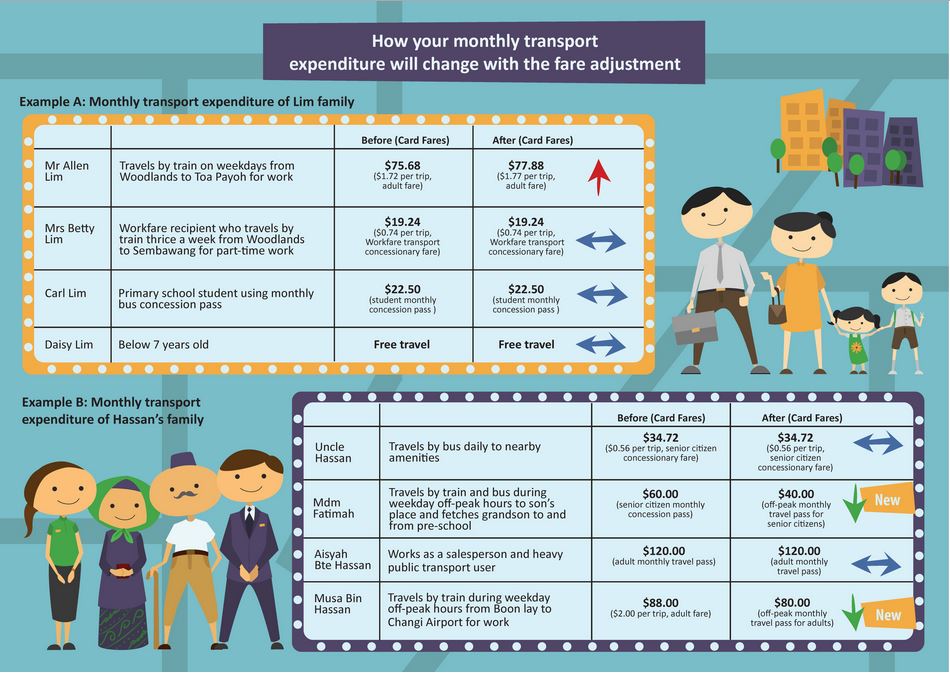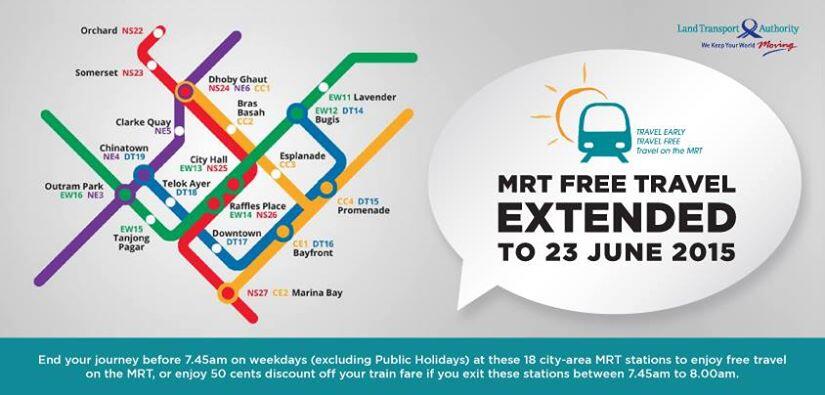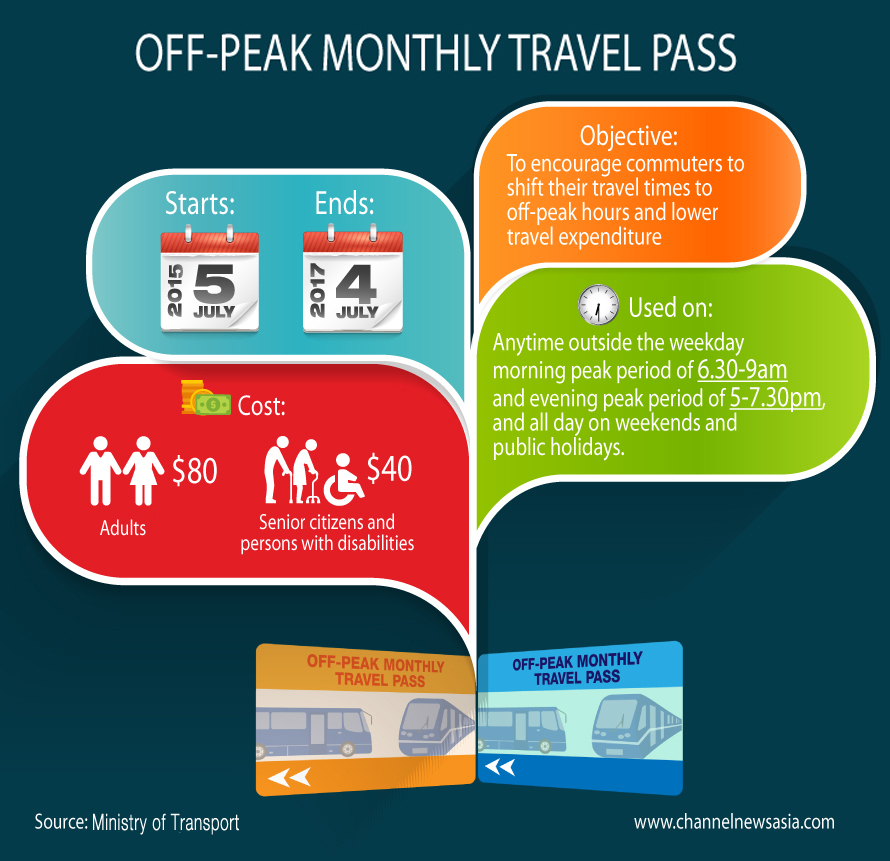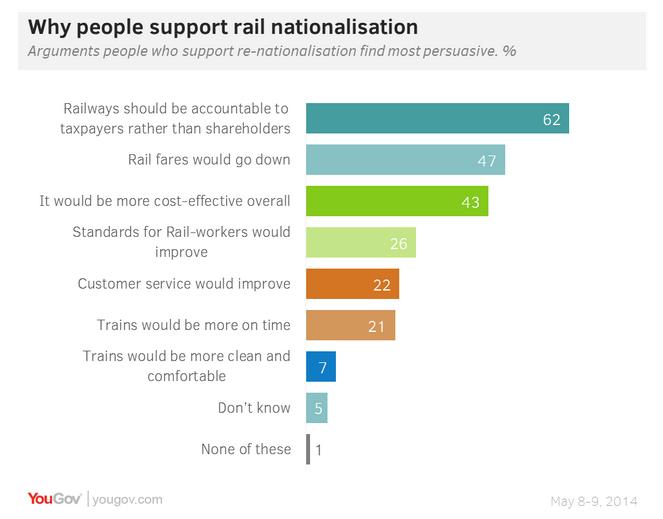With effect from 5 April 2015, public transport fare in Singapore will increase by 2.8 per cent. This is due to a roll over balance of 3.4 per cent in the 2014’s fare hike and after discounting the effect of lower oil prices, there would still be a net increase of 2 to 5 cents for most commuters. About 1.1 million commuters will not be affected as the PTC has decided to keep the fare of senior citizens, lower-wage workers and persons with disabilities, as well as the price of concessionary pass unchanged.
How will a 2 to 5 cents increase per journey affects an average commuter? Credits to the Ministry of Transport, they have done up a table to illustrate the impact on monthly transport expenditure of an average family.

(Image credit: Ministry of Transport)
As illustrated above, a working adult would expect their monthly transport expenditure to increase between $2 to $3 a month. That would probably cost you a cup of Starbucks’ latte a month or a decent meal for two in a restaurant if you add up the expenses for a year.
Although it may not be sizeable, a dollar saved is still a dollar earned. Here are 5 ways to cushion the impact of a fare hike:
*Updated 14 Apr 2015 to include a chance to win a $10 EZ-Link top up with the LINE app
1. Claim $10 travel credits with TransitLink Service Audit
You may or may not know of that you can claim a $10 travel credit from TransitLink every month by just participating in a short survey. This survey is aimed at improving the service level of TransitLink’s staff and your feedback is important for them to evaluate their level of customer service.
What you need to do:
- Log on to the Facebook’s page of TransitLink: https://www.facebook.com/TransitLinkSG
- Check out their latest updates on the list of designated offices and note the destination for which you will travel to in the next few weeks
- Make a transaction in the designated Ticket Office or Concession Replacement Office during the service audit period
- Submit your feedback of the selected office at http://transitlink.questionpro.com
- Once verified, you will receive a SMS notification informing you of the $5 credit that you can redeem from any Add Value Machine Plus (AVM+)
How much can you save or earn a month?
You can do a maximum of one survey for two different Customer Service Officers per month. Each survey will earn you a $5 credit so you can get $10 credit in total a month.
Read Also: TransitLink: Earn $5 Travel Credit Monthly
2. Earn travel credits with Travel Smart Rewards
With increasing population comes increased public transport ridership and there is that much that you can achieve by increasing train frequency. The Land Transport Authority is conducting a research to find out if incentivising commuters through gamification can help change the behaviour of commuters. Previously known as Insinc, Travel Smart Rewards is a scheme that rewards commuters for their travel on public transport.
Each commuter can earn points when they take the MRT on Monday to Friday with a CEPAS registered card at a rate of 1 points for every 1 kilometre travelled. To encourage commuters to take train during off peak hours, there will be more points for taking designated decongesting hours from 6.15 am to 7.15am and 8.45am to 9:45am. You can also qualify for different badges such as Bronze, Silver, Gold and Platinum with every travel during the decongesting hours.
Every 10 points allow you to spin and play a “Snake and Ladder” game to win travel credits. There are different amount to be won and the highest being a $200 travel credit which you can use to top up your fare card. You can let the system auto-play the game for you and you would be surprised to see that you can actually win money (in the form of travel credits) after some time. Just go to another Add Value Machine (AVM) and select “TSR Rewards” to load the credits into your card.
What you need to do:
- Register your Ez-Link/NETS FlashPay/Concession card at https://www.travelsmartrewards.sg
- Verify your email address and it will take another 8 days for them to verify the card after you take at least 2 train trips
- Start accumulating points with your train trips (Try to travel during the decongesting period to earn more points)
- Spin the wheel or set it on auto-pilot
- Check how much you win after some time
- Load these credits you won onto your travel card at any AVM.
How much can you save or earn a month?
It depends. If Lady Luck is shining on you, you can earn a few hundred travel credits in the game. Otherwise, you should also be glad with a few extra dollars added to your account.
3.Travel free during pre-peak hours
In an effort to reduce congestion and packed trains in the morning peak hours, the LTA has extended the one year free pre-peak travel until 23 June 2015. That is to say early birds who make the effort to shift their daily travel routine and tap out of the 18 designated MRT stations will travel for free. Don’t fret if overslept by 5 to 10 minutes because you will still get a 50 cents off if you exit the stations between 7.45am to 8am. Like the saying goes: the early bird catches the worm.
What you need to do:
- Reschedule your routine earlier
- Have your breakfast near your workplace
How much can you save or earn?
The cost of an entire trip or 50 cents a day.
4. Make use of rebates
Rebate is one of the most straightforward way to offset your travel expenses. Whether you are using NETS FlashPay or EZ-Link to take the trains or buses, there are different rebate schemes out there for the savvy commuters to make full use of.
For the NETS FlashPay, you can earn a 6 per cent rebates for using Auto Top-Ups if you meet a minimum spend of $500 a month.
If you are using the EZ-Link card, you can earn up to 7% cash rebate with the Imagine American Express Prepaid Card. This card acts as a two-in-one and you can use it either for shopping with merchants that accepts AMEX card or using it simply as a Ez-Link card to commute. You will earn a 2% rebates by taking the buses or trains with the Ez-Link purse and 5% rebates on all other spends with the AMEX purse. (Tip: You can set up EZ-Reload where your Ez-Link purse will be topped up by the AMEX purse) You can also earn further rebates and rewards by topping up your Imagine Card with another credit card of your choice. For example, you can use the UOB Preferred Platinum Visa Card or the DBS Woman’s Card for 10X points.
What you need to do:
- Decide if you want to use Ez-Link or NETS FlashPay as your primary card for public transport
- NET FlashPay: go sign up for a OCBC Frank Card and register for auto top-ups on Nets FlashPay’s website here: http://bit.ly/1y8LSJe
- Ez-Link: Sign up for a AMEX Imagine Card, then activate, register and reload it on the Imaginecard’s website here: http://www.imaginecard.com.sg
How much can you save or earn?
6% rebates for NETS FlashPay or 7% rebates + X* for Ez-Link (where X* is arbitrary – can be miles, rebates or points)
5. Use Off Peak Monthly Concession Pass
To further reduce bottlenecks during peak hours, the government will roll out a new Off-Peak Monthly Travel Pass (OMTP) on 5 July 2015 which will allow unlimited travel outside the weekday morning peak period (6.30am – 9am), evening peak period (5 – 7.30pm) and all days on weekends and public holidays. Instead of costing $120 for the current Adult Monthly Travel Pass, the OMTP will cost just $80 for adults and $40 for senior citizens and person with disabilities.
If you work out the maths, there are about 22 weekdays in a month so assuming a one way trip cost $1.80, if would have cost you close to $80 a month. (which is about the cost of an OMTP) The difference is you can now make additional trip on weekdays (say, a lunch break that is a few stations away) and weekends without paying the extra dollar.
What you need to do:
Work out your monthly travel expenses and see if it exceeds the cost of an OMTP of $80.
If it does, check if you can reschedule your daily routine
Make sure you tap IN outside the peak period timing (before 6.30am or after 9am for morning) and (before 5pm or after 7.30pm for evening)
How much can you save or earn?
If you travel twice a day with an average trip cost of $2, it would have cost you $120. Purchasing the card will allow you to save $40.
Now that you have learnt how to reduce your travel expenses, start to implement these tips so that you can better manage your travel expenses. You might even reduce your overall expenses on transport!
6. Get a free EZ-Link $10 top up with LINE (Updated 14 Apr 2015)
EZ-Link has just collaborated with LINE in a recent news release on 13 Apr 2015, commuters can now stand a chance to win a $10 free top-up and other attractive prizes when they use LINE.
What you need to do:
- Download the LINE App from your Google Play or your Apple’s app store
- Add “EZ-Link” as your friend
- Send a message “EZ-Link EZ-Reload” daily from now till 31st May 2015.
- Stand a chance to win EZ-Link $10 top-up values, LINE merchandises, electronic gadgets, jewelries and many more
How much can you save or earn?
If you are lucky, you can win a $10 top up to your EZ-Link or other attractive prizes such as a ASUS phone, Swarovski jewellery, Krispy Kreme treats, Mi Powerbank, etc
Do not be disappointed if you do not win as you can attempt this daily until 31st May 2015 and i’m sure you could win something!

















